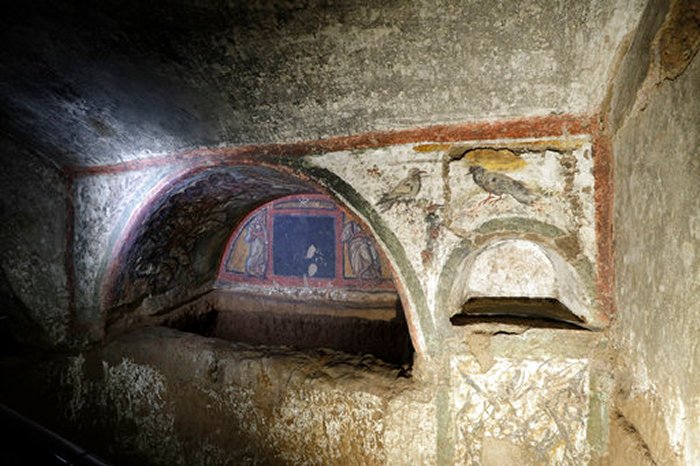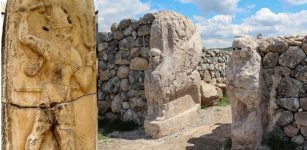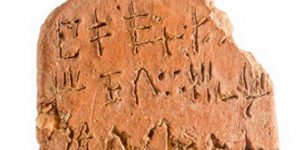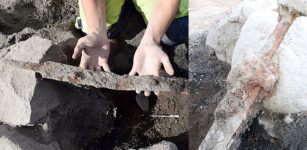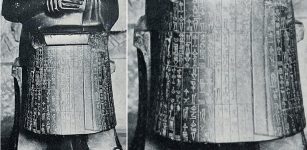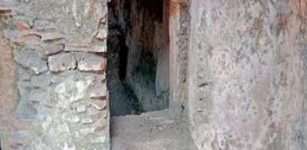Extraordinary Biblical Frescos Uncovered In Domitilla Catacombs
AncientPages.com - Deep beneath the city of Rome, Italy there is a vast ancient underground labyrinth. Here, we find the Domitilla catacombs that represents the roots of Christianity.
Stretching over 12 kilometers (7.4 miles) and descending four levels with 26,250 tombs, this remarkable ancient underground complex is now revealing some of its ancient secrets.
A view of a cubicle of the Santa Domitilla catacombs, in Rome. (AP Photo/Andrew Medichini)
With help of laser and scanning technology, scientists have been able to reconstruct stunning and artistic scenes that shed light on the early days of Christianity.
The restoration work has taken years and experts have restored 10 of the 70 chambers in these catacombs.
Named after a member of the Roman family that had commissioned the burial grounds, the Domitilla Catacombs are the largest in Rome. Burial within Rome’s walls was forbidden by law which is the reason why all of the city’s catacombs are located on the outskirts of modern Rome, typically along major roadways.
The catacombs are located near the Appian Way date from the second to the fifth centuries and the renovated areas include frescoes from both pagan mythology and Christian faith, showing how intertwined the two were in the early Church.
A view of the hypogeum of the Flavi at the Santa Domitilla catacombs, in Rome. (AP Photo/Andrew Medichini)
Many of the ancient frescoes are extraordinary. We see Biblical depictions of of Christ and the Apostles, Noah and his ark, Daniel and the lions.
A detail of the restored fresco of "dei Fornai" (bakers) cubicle, is pictured during a visit after the restoration of the catacomb of Santa Domitilla, in central Rome (Getty images)
They also show the story of life in ancient Rome. "These works show the difficult path the Romans walked on the way to their new faith," said Monsignor Giovanni Carru of the Pontifical Commission of Sacred Art.
The new area also includes a small museum displaying statues, parts of sarcophagi and other artifacts from the tombs.
The first area that was restored without the use of laser dates back to the third century and still has many references to pagan art, from grape vines adorning the vaults of the passages, to the cupids used for the smaller tombs, most likely belonging to children.
See also:
Deciphered Ancient Tablet May Depict Biblical Tower Of Babel – New Evidence
Lost Q Source Remains An Unsolved Biblical Mystery
Many of the crypts have frescoes that seem blotted out. In fact, they were stripped by "ripping," when catacombs were looted and frescoes cut out and removed as trophies in the Middle Ages.
For centuries, the ceiling frescoes in the Catacombs of St. Domitilla were covered in a thick black layer of calcium deposits, algae and smoke from oil lamps. Laser instruments were used to burn away the dirt and deposits, leaving only the rich colors of the frescoes beneath.
A friar looks at a fresco, part of the “dei Fornai” (bakers) cubicle (Getty images)
The beautiful artwork shows a mix of pagan symbols and early scenes from Christianity.
The fresco is adorned with peacocks, which in pagan belief were symbols of the afterlife. The crypts were painted around 360 AD — just a few decades after Christianity had been made legal by Emperor Constantine.
The Domitilla catacombs are believed to be the world’s oldest Christian cemetery.
AncientPages.com
Expand for references
